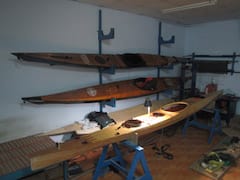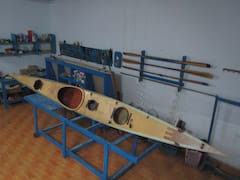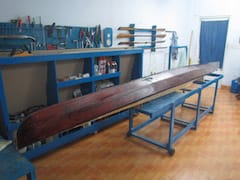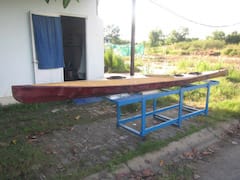 ontinue trialling and adjusting various boat equipments. The 2.2 Amph SLA battery works, but not to my expectation, first, it’s too heavy, second, its capacity is quite small, and third, the battery doesn’t hold its electricity for too long, about 2 days without charging and the battery would exhaust… After consulting with some other paddlers, I’ve decided to replace it with 3 Lithium cells, the results are just… superb!
ontinue trialling and adjusting various boat equipments. The 2.2 Amph SLA battery works, but not to my expectation, first, it’s too heavy, second, its capacity is quite small, and third, the battery doesn’t hold its electricity for too long, about 2 days without charging and the battery would exhaust… After consulting with some other paddlers, I’ve decided to replace it with 3 Lithium cells, the results are just… superb!
I now have about 10 Amph in the very small 3 Li-ion cells, almost 5 times more the capacity, and 5 times less the weight, yet 5 times the price 😀, advancements in battery technologies is just amazing! According to one of my friend, an “expert” in electric and electronic devices, the Li-ion would usually last longer, and compared to the SLA, with zero maintenance cost. After replacing the battery, I fitted the last electrical components.
The AA charger and the USB charger, they’re positioned inside another waterproof box, connected to the battery box with electrical wires inside a plastic tube. The installation is pretty easy, the two devices are connected via two switches, simply put your iPhone (or your VHF radio, or your AA batteries) into the box, turn on the switch, close the box, and let the Li-ion cells, plus the solar panel do their job!
Also, I’ve removed the plastic seat, replace it with just a back – rest instead. The back – rest is built from plywood, bent into a curved shape, covered on 1 side with a rubber sheet (to make your back resting more comfortable), and fitted into the cockpit aft, it could be rotated slightly to suit my various sitting positions. These are last updates for the boat in this 2016 year, now it’s time to just enjoy the water!

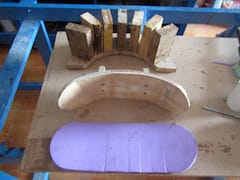
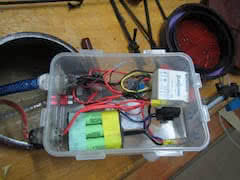
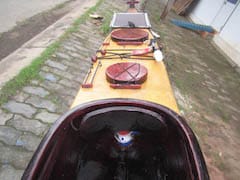
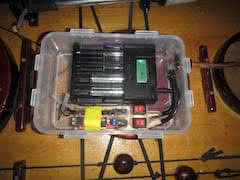
 ade several short paddlings (10, 12 km) to trial my newly – built Serene – 2 kayak. The overall feeling is very pleasing, the boat is much easier to control compared to my previous one Serene – 1, and it’s faster, taking up momentum in just a few light strokes! But the velocity measures would be postponed until I could finish all equippings, all adjustments, and begin longer paddling to know precisely.
ade several short paddlings (10, 12 km) to trial my newly – built Serene – 2 kayak. The overall feeling is very pleasing, the boat is much easier to control compared to my previous one Serene – 1, and it’s faster, taking up momentum in just a few light strokes! But the velocity measures would be postponed until I could finish all equippings, all adjustments, and begin longer paddling to know precisely.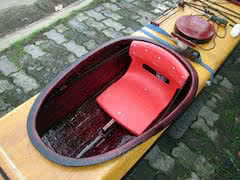
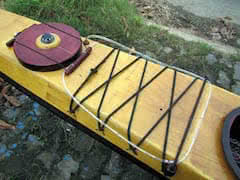
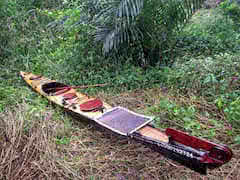
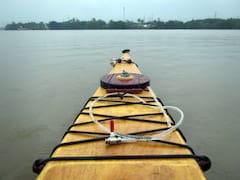
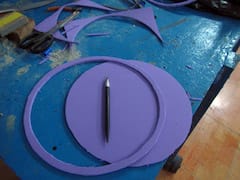
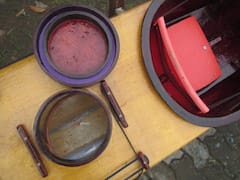
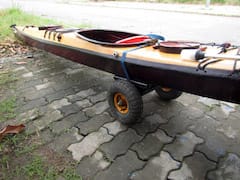
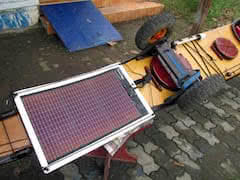
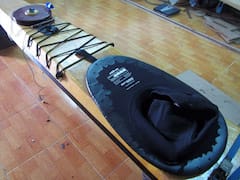
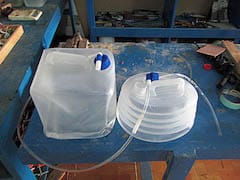
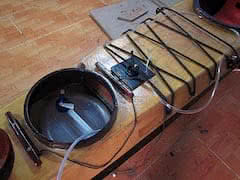
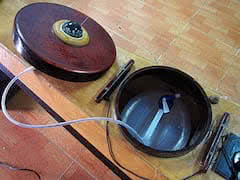
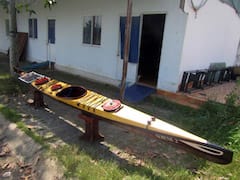
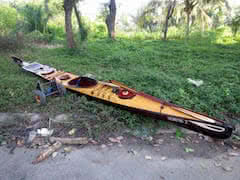
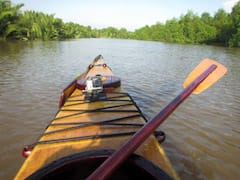
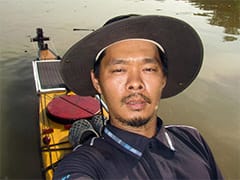
 ticking the vinyl decal decorations is among the last steps that complete the kayak. Since the deck spaces are almost used up for various accessories, the boat names and owner’s informations go onto the port and starboard sides instead, and the boat eyes intrinsic for any Vietnamese boat of course! The solar panel is tied on the aft deck, stretched with two short wooden spars, and lines through its grommets.
ticking the vinyl decal decorations is among the last steps that complete the kayak. Since the deck spaces are almost used up for various accessories, the boat names and owner’s informations go onto the port and starboard sides instead, and the boat eyes intrinsic for any Vietnamese boat of course! The solar panel is tied on the aft deck, stretched with two short wooden spars, and lines through its grommets.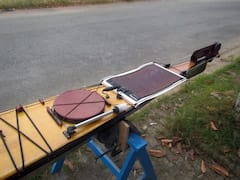
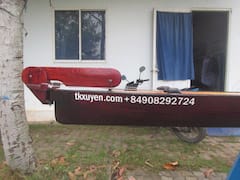
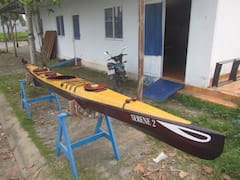
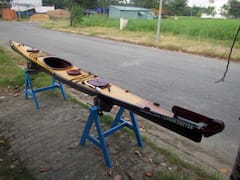
 he bilge pump is a critical component of this Serene – 2 kayak. Empty out a flooded boat, or simply make your seat less wet, it gives you lots of confidence and convenience on long paddling trips. Today, I installed the bilge pump with its water hose (through a hole drilled on the port side). Electrical wires are connected and carefully sealed inside plastic tubes with silicone glue to make them really waterproof.
he bilge pump is a critical component of this Serene – 2 kayak. Empty out a flooded boat, or simply make your seat less wet, it gives you lots of confidence and convenience on long paddling trips. Today, I installed the bilge pump with its water hose (through a hole drilled on the port side). Electrical wires are connected and carefully sealed inside plastic tubes with silicone glue to make them really waterproof.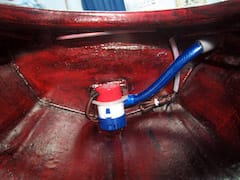
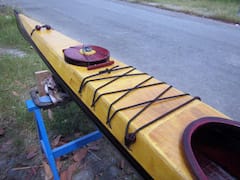
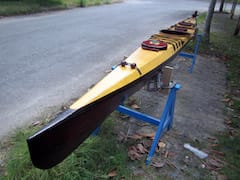
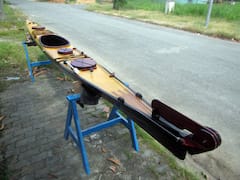
 ectified one problem with the signal light, the bulb is too greedy, it eats up a lot of electricity and could potentially burn up the reed switch (I’ve noticed the reed switch has malfunctioned sometimes due to the high current). So I replace the bulb with 8 small white LEDs (1 Watt each). Some more soldering work, but finally it’s done, equally bright, but less power consumed, and safer for the switch.
ectified one problem with the signal light, the bulb is too greedy, it eats up a lot of electricity and could potentially burn up the reed switch (I’ve noticed the reed switch has malfunctioned sometimes due to the high current). So I replace the bulb with 8 small white LEDs (1 Watt each). Some more soldering work, but finally it’s done, equally bright, but less power consumed, and safer for the switch.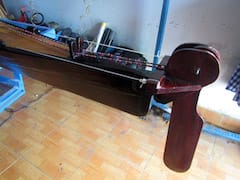
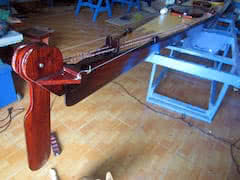
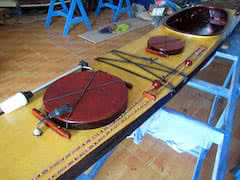
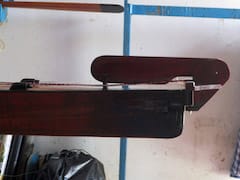
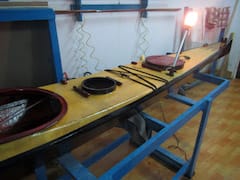
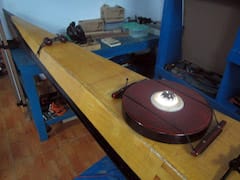
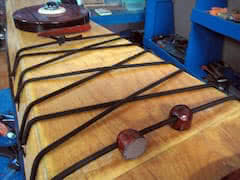
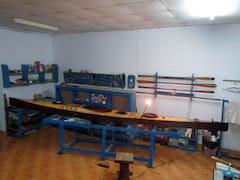
 fter joining the hull and deck, the hull receives its final bottom glassing. The fiber fabric would overlap the deck about an inch, to better seal the joint. One little trick to make a clean, tidy line at the painting (or epoxy) boundary: mask the area to paint (or to fill with epoxy) with duct tape. Prior to applying (colored) paint or epoxy, brush the duct tape with a very thin layer of transparent paint (or epoxy).
fter joining the hull and deck, the hull receives its final bottom glassing. The fiber fabric would overlap the deck about an inch, to better seal the joint. One little trick to make a clean, tidy line at the painting (or epoxy) boundary: mask the area to paint (or to fill with epoxy) with duct tape. Prior to applying (colored) paint or epoxy, brush the duct tape with a very thin layer of transparent paint (or epoxy).